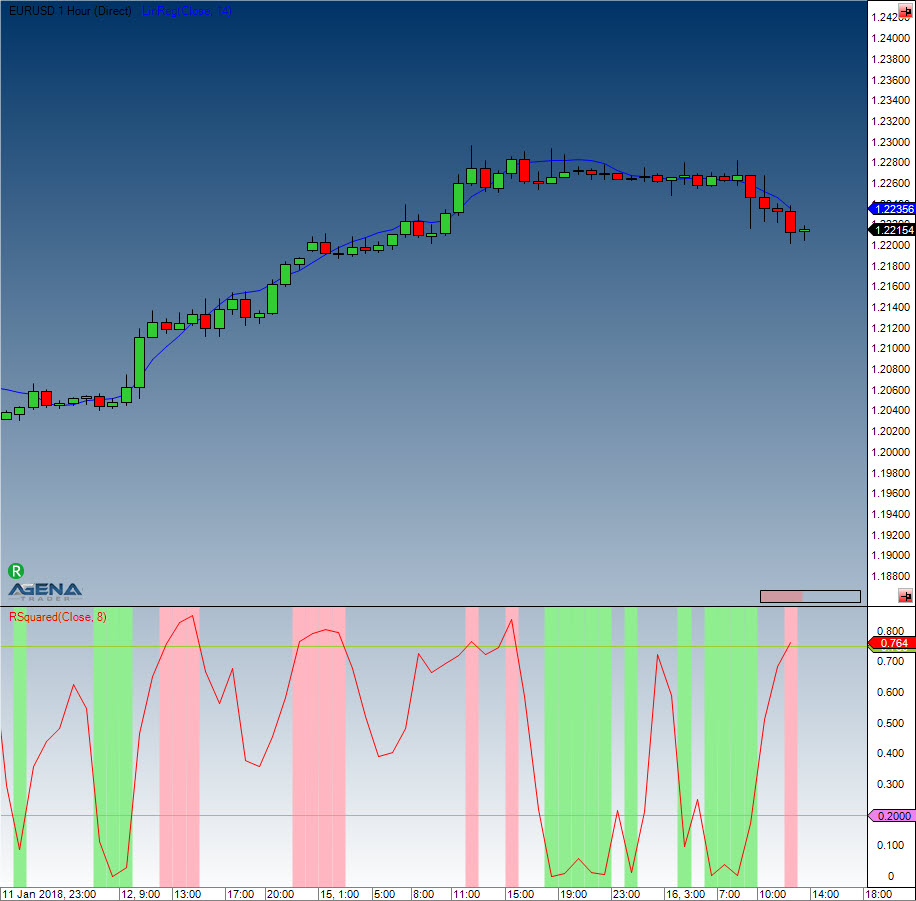R-Squared
Description
This indicator belongs to the linear regression series. R-Squared is the correlation coefficient that specifies the quality of the linear regression line.
It is the calculation that gives R-Squared its name – the value is the square of the correlation coefficient, which in mathematics is prefixed with the Greek letter Rho (P).
See Linear Regression, LinRegSlope, LinRegIntercept.
Interpretation
The value of the oscillator fluctuates between 0 and 1. By default, the upper boundary line is located at 0.75, and the lower border is at 0.2. If the prices are in a sideways movement, the data is scattered around the regression line. R-Squared will have a value of 0 in the aforementioned situation. In a strong trend phase, the prices will remain within a tight range for an extended period of time; if these are located close to the regression line then the R-Squared indicator will have a value of 1. Stanley Kroll and Tuchar Chande used the correlation coefficient as a trend filter in their book “The new technical trader”.
Further information
http://www.blastchart.com/Community/IndicatorGuide/Indicators/LinearRegressionRSquared.aspx
Usage
RSquared(int period)
RSquared(IDataSeries inSeries, int period)
RSquared(int period)[int barsAgo]
RSquared(IDataSeries inSeries, int period)[int barsAgo]Return value
double
When using this method with an index (e.g. RSquared(8)[int barsAgo] ), the value of the indicator will be issued for the referenced bar.
Parameters
inSeries Input data series for the indicator
period Number of bars included in the calculations
Visualization

Example
Last updated